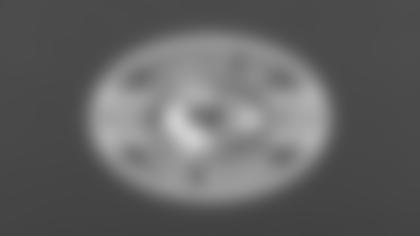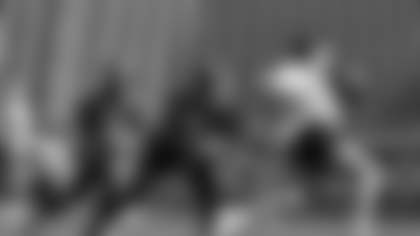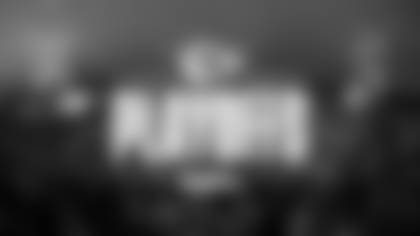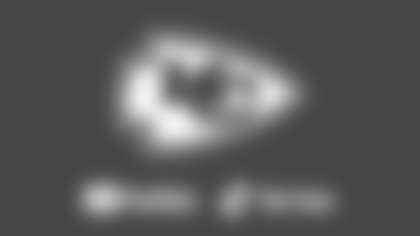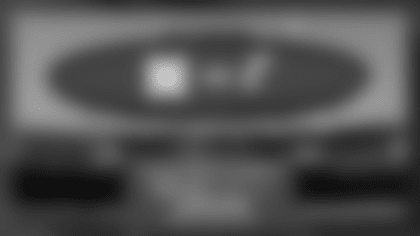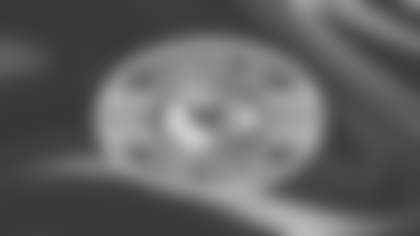*Included in the summer-long exhibition at Union Station of the Pro Football Hall of Fame's history of the game is a substantial collection of Kansas City Chiefs artifacts dating back to the earliest days of the franchise and the creation of the American Football League by team owner Lamar Hunt *
*Over the next couple of weeks, we'll identify some of what fans and long-time football enthusiasts might call "treasures" – some never seen by the general public before the exhibition's opening this past Memorial Day weekend. The exhibition, which traces the history of the game from its roots, is open daily at Union Station and closes September 7. *
"The Founding Document"
As historian of the Chiefs, I've been known to call these few pages in Lamar Hunt's handwriting the "Magna Carta" of the AFL, but that's largely hyperbole. Still, this document currently on display at Union Station's *Gridiron Glory *exhibit is an important part of the game's history.
Lamar Hunt was a voracious writer of memoranda encompassing many pages as he sought to direct his new enterprise. In his many missives, he gave considerable thought on how his new pro football league should run and his writings form the corpus of forty-some boxes of "The Lamar Hunt papers" stored at his family's Hunt Midwest offices.
Hunt recognized the importance of what I have identified as one of the AFL's founding documents by including it in what he termed the club's History Wall, which he created to tell the story of the founding of the American Football League, the Dallas Texans and eventually the Kansas City Chiefs, in photos and documents and originally placed it in the team's practice facility on the grounds of the Truman Sports Complex. Here few people but the team's players saw it.
The document has attracted wider attention because of the essential information it provides into how Hunt believed a professional league should operate. While few saw it, fewer still could read Hunt's handwriting if they did. Hunt did not work off a computer – none was available when this was penned anyway – and his pencil sketches in the margins of many of his directives to staff were often difficult to read. Even he recognized that and in putting together the History Wall he was right to have his scribbling typed out and re-printed. At *Gridiron Glory *you can see the document in its original form.

By 1959, it had become abundantly clear to Hunt that he would not be able to purchase an NFL franchise. There were no takers of his offer to purchase a team. Flying back from Miami in February following a meeting with Walter Wolfner, owner of the then-Chicago Cardinals, he knew that it had been his last chance. Wolfner turned him down. But Hunt had an epiphany.
From his conversation with Wolfner, Hunt knew that other businessmen had approached the Cardinals with an interest in buying them. That led him to believe that together with these men and others, perhaps a new professional league could make it operating outside the NFL. Interest was there, he believed, and during what would be a long flight back to Dallas in a prop plane he asked a flight attendant for some paper which turned out to be some onion-skinned American Airlines stationary, and sketched out how it might all work.
Entitled, "Original 6; First Year's Operations," Hunt identified some specifics of what would be an entirely new enterprise.
By the time his plane landed in Dallas, he had outlined some general operating principals for the league including a basic profit-and-loss statement, estimates on equipment costs, and revenue from ticket sales.
He included cities to host teams, a schedule and a "split net gate 60% to home – 40% with visitors have a choice of 40% or $35,000, whichever is larger." Some of the cities he identified fell outside the NFL's list of franchises bringing the game to a wider audience.
Excited now that he could shed what he considered an unfulfilling career as an employee of Hunt Oil, he was empowered to reach out to other prospective owners and make his dreams a reality.
If You Go The first page of this document currently sits in a special case near the front of the Chiefs section of Gridiron Glory, part of the Pro Football Hall of Fame's exhibit at Union Station in downtown Kansas City.


